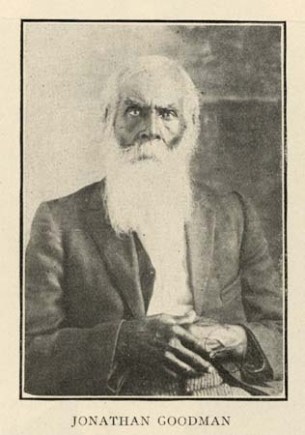Not a drop.
SKETCH OF THE SIMMONS FAMILY
William Simmons, the father of most all of the Simmons of Sampson County, was born in the eastern part of Sampson County, near Faison, N.C. In early life he married one Penny Winn, of Wayne County, N.C. William Simmons is now dead, but he has often often told the writer that he was of purse white and Indian descent, and judging from his features and general characteristics, we are quite sure that hsi statements were true, he having long black hair, and prominent cheekbones, and his color corresponding very strikingly near with the real Indian. His wife is living, and resides near Clinton, N.C. James Simmons, one of the sons of William and Penny Simmons, is a very prominent farmer, and has accumulated quite a lot of real estate; also his hother brothers have shown a good share of industry, which has resulted in a similar accumulation. Percy Simmons married the daughter of Hardy A. Brewington.
BETSY J. SIMMONS
The subject of this sketch was formerly Betsy J. Thornton. SHe married Green Simmons in 1843 in Clinton. She is the mother of William Simmons and has numerous grandchildren residing in Sampson County who claim to be free from all negro blodd. Betsy had grey eyes, straight hair, high cheek bones, and in general appearance was half Indian and half white.
WILLIAM SIMMONS
The subject of this sketch lived in South Clinton township, Sampson County, but died a few years ago. His wife, still living, was Penny Winn who lived near Neuse River in Wayne County. William’s mother was Winnie Medline, who married Jim Simmons in Fayetteville, and she made an affidavit in 1902, in order that her son William could vote under the grandfather clause, that her mother was a white woman and her father was an Indian. She further states in her affidavit that there was not a drop of negro blood in her veins or those of her children. Her son, William Simmons, had dark brown eyes, straight hair and high cheek boones and light brown skin. He claimed that his grandfather and grandmother, on his father’s side, were Indians and came from Roanoke River, and never affiliated with the negroes. William Simmons has eighteen grandchildren whose parents have not intermarried with the negro race, and these children are without school advantages except by private subscriptions.
From George E. Butler, “The Croatan Indians of Sampson County, North Carolina. Their Origin and Racial Status. A Plea for Separate Schools,” (1916).
